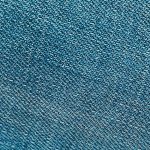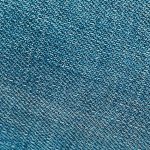To care for your selvedge denim, wash it infrequently—only when visibly dirty or after six months of wear—to preserve unique fades. Always turn jeans inside out, use cold water, and choose gentle detergents. Air dry them in shade to avoid shrinkage and fading. Store your denim in a cool, dry place to maintain shape and color. Repair small tears yourself with needle and thread, but seek pros for bigger damage. Keep these tips in mind, and you’ll reveal deeper ways to extend your denim’s life and character.
Table of Contents
Key Takeaways
- Wash selvedge denim infrequently, ideally after six months or when visibly dirty, using cold water and mild detergent to preserve fades and fabric.
- Always turn jeans inside out before washing and air dry in shade to prevent color fading and fiber damage.
- Repair small holes and frays with needle and thread or fabric glue; seek professional help for large tears or complex seam damage.
- Store selvedge denim folded or hung in a cool, dry place away from direct sunlight to maintain texture and color.
- Wear jeans regularly to encourage natural fading patterns; avoid harsh scrubbing, bleach, and excessive sun exposure to protect fabric integrity.
Understanding Selvedge Denim Fabric
Although selvedge denim might look similar to regular denim at first glance, its unique weaving process sets it apart.
When you pick up selvedge denim, you’re holding fabric woven on traditional shuttle looms, which produce a tightly woven edge that prevents unraveling. This edge, or “selvedge,” runs down the outseam of the jeans and is often finished with a colored thread, giving it a distinct look.
Unlike mass-produced denim, selvedge denim is made with more attention to detail and durability. You’ll notice selvedge denim tends to be thicker and stiffer initially, but it softens beautifully over time.
Understanding this fabric helps you appreciate why it ages uniquely and why caring for it properly preserves its quality and character.
How Often Should You Wash Selvedge Denim?
How often should you wash selvedge denim to keep it looking its best?
Generally, you want to wash your jeans as infrequently as possible. Washing too often can fade the fabric prematurely and break down the fibers, reducing durability.
Wash your jeans sparingly to prevent premature fading and fiber damage, keeping them durable longer.
Many denim enthusiasts recommend washing after about six months of regular wear or when your jeans start to smell or feel dirty. If you wear them daily, consider washing every 3-4 weeks.
Spot cleaning minor stains can extend the time between washes.
Remember, selvedge denim develops unique fades and character over time, which frequent washing can diminish.
Trust your nose and eyes—wash only when necessary to preserve both the look and lifespan of your selvedge denim.
Best Practices for Washing Selvedge Denim
Knowing when to wash your selvedge denim is just the start; how you wash them matters a lot too.
Always turn your jeans inside out before washing to protect the outer fabric and preserve the fading. Use cold water to prevent shrinking and color loss. Select a gentle cycle or hand wash to minimize stress on the fibers.
Avoid harsh detergents; opt for a mild, color-safe detergent instead. Resist using bleach or fabric softeners—they can damage the cotton and reduce durability.
If your jeans are heavily soiled, spot clean first rather than washing the entire garment.
Finally, avoid overwashing by sticking to your washing schedule, as excessive washing breaks down the denim’s structure and shortens its lifespan.
Drying Techniques to Protect Your Denim
To keep your selvedge denim looking sharp, you’ll want to air dry it instead of using a dryer.
Heat can cause shrinkage and damage the fabric’s fibers, so avoiding it preserves your jeans’ fit and texture.
Letting your denim dry naturally helps maintain its quality and longevity.
Air Drying Benefits
Although machine drying might seem convenient, air drying your selvedge denim preserves its shape and fabric integrity far better.
When you air dry, you avoid the tumbling that can stretch and distort the fibers. Instead, the denim dries naturally, maintaining its original fit and texture.
Hang your jeans inside out in a well-ventilated area to minimize fading and keep colors vibrant. Air drying also helps prevent shrinkage, so your selvedge denim stays true to size longer.
Plus, it reduces stress on the fibers, extending your jeans’ lifespan. By choosing air drying, you protect your investment and keep your denim looking great wash after wash.
Avoiding Heat Damage
When you expose selvedge denim to high heat, you risk damaging the fibers and altering its fit. Heat can cause shrinkage, weaken the cotton threads, and fade the rich indigo dye.
To protect your denim, avoid using a dryer or direct sunlight for drying. Instead, gently squeeze out excess water without wringing and lay your jeans flat or hang them inside out in a shaded, well-ventilated area. This method preserves the fabric’s integrity and color.
If you must speed up drying, use a fan or low-heat setting, but only as a last resort. By steering clear of high heat, you’ll maintain your selvedge denim’s durability, shape, and appearance for years to come.
Storing Selvedge Denim to Maintain Shape and Color
Since selvedge denim is crafted to last, storing it properly helps you preserve both its shape and color over time.
Always hang your jeans by the waistband using sturdy hangers to avoid creases and maintain their silhouette. Avoid folding them tightly, which can cause unwanted lines and weaken fibers.
Store your denim in a cool, dry place away from direct sunlight to prevent fading and fabric deterioration. If you prefer stacking, fold them gently along natural creases and place them in a breathable fabric drawer or shelf.
Avoid plastic bags or airtight containers that trap moisture and risk mold. By handling your selvedge denim thoughtfully during storage, you’ll keep them looking sharp and vibrant for years to come.
Common Signs Your Denim Needs Repair
You’ll know your selvedge denim needs repair when you spot visible fabric wear or damage to stitching and seams.
Don’t ignore unusual odors or stubborn stains either—they can signal deeper issues.
Catching these signs early helps keep your jeans in great shape longer.
Visible Fabric Wear
Although selvedge denim is known for its durability, visible fabric wear signals that your jeans need some attention. Over time, the fabric thins, creating weak spots that can lead to holes if ignored. Pay close attention to areas that experience frequent friction or stress.
Here are common signs of visible fabric wear you shouldn’t overlook:
- Fading that exposes white threads beneath the indigo dye
- Thin patches, especially around pockets and knees
- Small holes or tears starting to form
- Frayed edges along cuffs or belt loops
- Rough or uneven texture compared to the rest of the fabric
Spotting these signs early helps you decide when to reinforce or patch your denim, extending its life considerably.
Don’t wait until the damage worsens!
Stitching and Seam Damage
When stitching and seams start to fray or come undone, your selvedge denim shows clear signs it needs repair. Ignoring these issues can cause bigger damage, making repairs more costly. Check common stress points like the inseam, waistband, and pockets regularly. Small fixes early on help maintain durability and appearance.
| Damage Type | Common Location | Repair Tip |
|---|---|---|
| Frayed Stitching | Inseam | Reinforce with matching thread |
| Seam Separation | Waistband | Use strong backstitch |
| Loose Threads | Pocket Edges | Trim and secure ends |
Address stitching and seam damage promptly to keep your denim sturdy and looking great for years.
Unusual Odors or Stains
Stitching and seam issues often signal the need for repair, but unusual odors or stains can be just as telling. When you notice strange smells or persistent stains on your selvedge denim, it’s time to act.
These issues not only affect appearance but can also degrade fabric integrity over time. You should inspect your denim for:
- Musty or sour smells indicating mold or mildew
- Oil or grease stains that attract dirt
- Food or drink spills that have set in
- Sweat stains causing discoloration
- Chemical or bleach spots weakening fibers
Addressing these problems early prevents permanent damage. You can spot clean or consult a professional for stubborn stains.
Don’t ignore odors—they often signal hidden fabric damage needing repair or deeper cleaning.
DIY Repair Tips for Small Denim Damages
Small tears and frayed edges on your selvedge denim don’t have to mean the end of their lifespan. You can easily fix minor damages yourself with a few simple tools and techniques. Use a needle, strong thread, and a patch or darning method to reinforce weakened areas.
Here’s a quick guide:
| Damage Type | DIY Fix Tip |
|---|---|
| Small tear | Use a patch or fabric glue inside |
| Frayed edge | Stitch tightly along the edge |
| Tiny hole | Darn with matching thread |
Always choose thread that matches your denim to keep repairs discreet. Take your time stitching to guarantee durability. These quick fixes keep your jeans wearable and extend their life before professional help’s needed.
When to Seek Professional Denim Repairs
How do you know if a denim repair is beyond a simple DIY fix? When damage gets complicated, it’s best to consult a professional.
Consider seeking expert help if you encounter:
- Large tears or holes that require patching
- Significant seam splits or structural damage
- Complex distressing repairs to maintain aesthetic
- Damage near hardware like buttons or zippers
- Multiple worn areas needing simultaneous attention
Professionals have the right tools and skills to restore your selvedge denim without compromising its integrity.
Attempting complex repairs yourself could worsen the damage or alter the fabric’s original look.
Remember, investing in expert repairs prolongs your jeans’ life and preserves their unique character.
When in doubt, trust a denim specialist to handle intricate fixes carefully and professionally.
Tips for Maintaining the Fade and Texture of Selvedge Denim
Why does maintaining the fade and texture of your selvedge denim matter? Because these unique qualities showcase your jeans’ history and personality.
To keep them sharp, avoid frequent washes—only wash when truly necessary. When you do, turn your jeans inside out and use cold water with a gentle detergent to preserve color and fabric integrity. Air dry them flat to prevent shrinking and maintain texture.
Store your denim folded or hung in a cool, dry place away from direct sunlight to avoid fading. Finally, wear your jeans regularly to encourage natural fading patterns while steering clear of harsh scrubbing or bleaching.
Frequently Asked Questions
Can I Wear Selvedge Denim in Extreme Weather Conditions?
In scorching heat or freezing cold, you can wear selvedge denim, but remember it’s thick and less breathable. You’ll stay cool in winter, but in summer, you might feel hot and uncomfortable, so dress accordingly.
What Are the Environmental Impacts of Selvedge Denim Production?
You should know selvedge denim production uses lots of water and energy, and often involves chemical dyes. While it’s durable, its environmental impact can be significant, so choosing sustainable brands helps reduce harm to the planet.
How Do Selvedge Denim Brands Differ in Quality and Price?
You’ll find selvedge denim brands vary in quality based on fabric origin, weaving technique, and craftsmanship. Higher-quality brands use premium materials, driving up price, while budget options may compromise on durability and finish details.
Are There Specific Shoes That Pair Best With Selvedge Denim?
You’ll find boots, sneakers, and loafers pair best with selvedge denim. Opt for leather boots for rugged looks or clean sneakers for casual style. Don’t hesitate to experiment—your shoes can elevate your denim’s vibe!
Can Selvedge Denim Be Tailored or Altered Easily?
Though selvedge denim feels rigid, you can tailor it easily to fit perfectly. Just remember, altering may affect the fabric’s unique edge, so choose your tailor wisely to preserve its distinctive charm and durability.







